The Moon's surface is covered in deep craters, lava-filled basins, looming mountains and all manner of other geological features.
Among these are cracks in the lunar surface known as rilles – a name derived from the German for groove.
Most rilles (also called rimae) are believed to be around 3.6 billion years old. They come in many guises but break down into three main types.
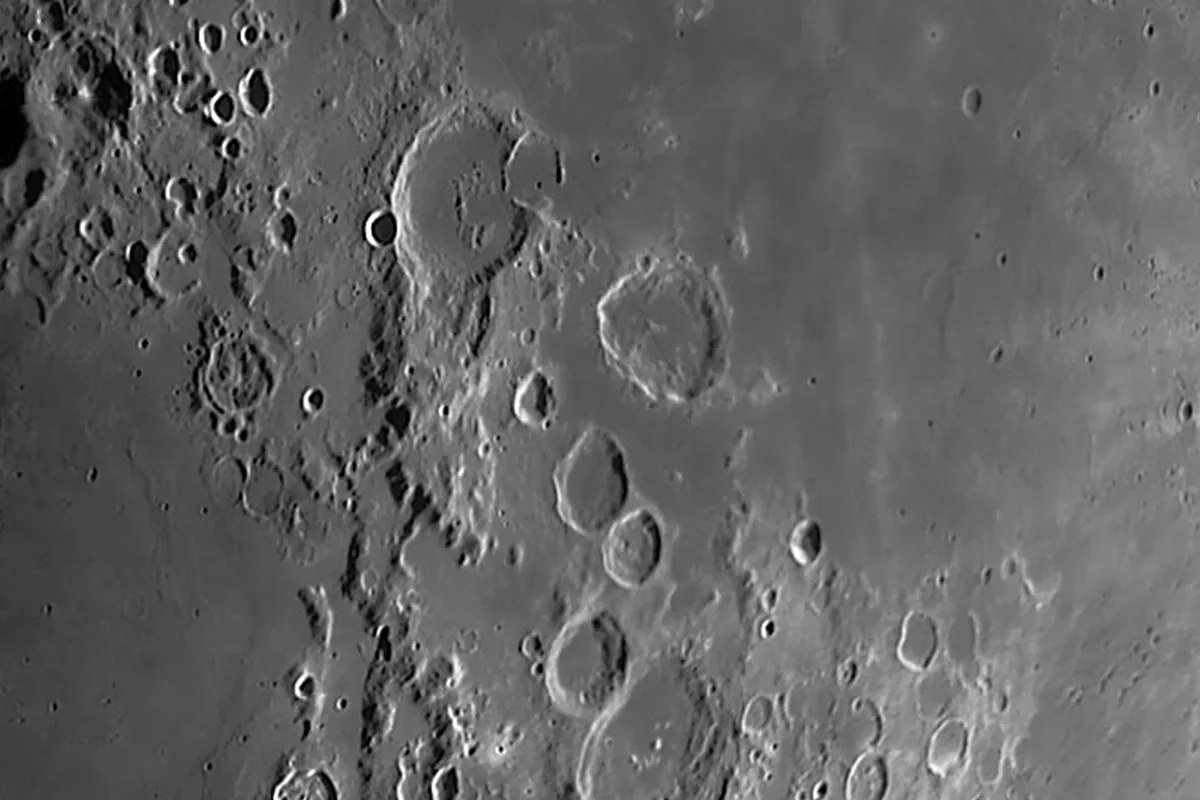
Sinuous rilles look as if they’ve been carved by a meandering river.This isn’t actually far from the truth, except that the river would have been lava, not water.
It’s believed that the lava that once flowed below the lunar surface created tubes.A meteoroid impact would have caused the tube, long evacuated of lava, to collapse.
Arcuate rilles appear as parts (arcs) of concentric circles within a lunar basin.They are thought to form when the lava filling the basin cools and contracts.
The heavy plug of lava in the centre of the basin sinks slightly, causing these rilles to appear at the basin’s edge.
Straight rilles, as their name suggests, appear as almost linear ‘roads’ on the lunar surface.
In most cases these are grabens: regions of the surface that have dropped between two parallel fault lines.
We can only see one side of the Moon, and cannot from Earth directly see the far side of the Moon, but there's still much to enjoy observing on the lunar surface!
Below you’ll find some of the best lunar rilles that can be seen from Earth with a telescope. If you want to trying imaging them, read our guide on how to photograph the Moon.
Did you also know that the Moon can often be seen during the day?
Rima Ariadaeus
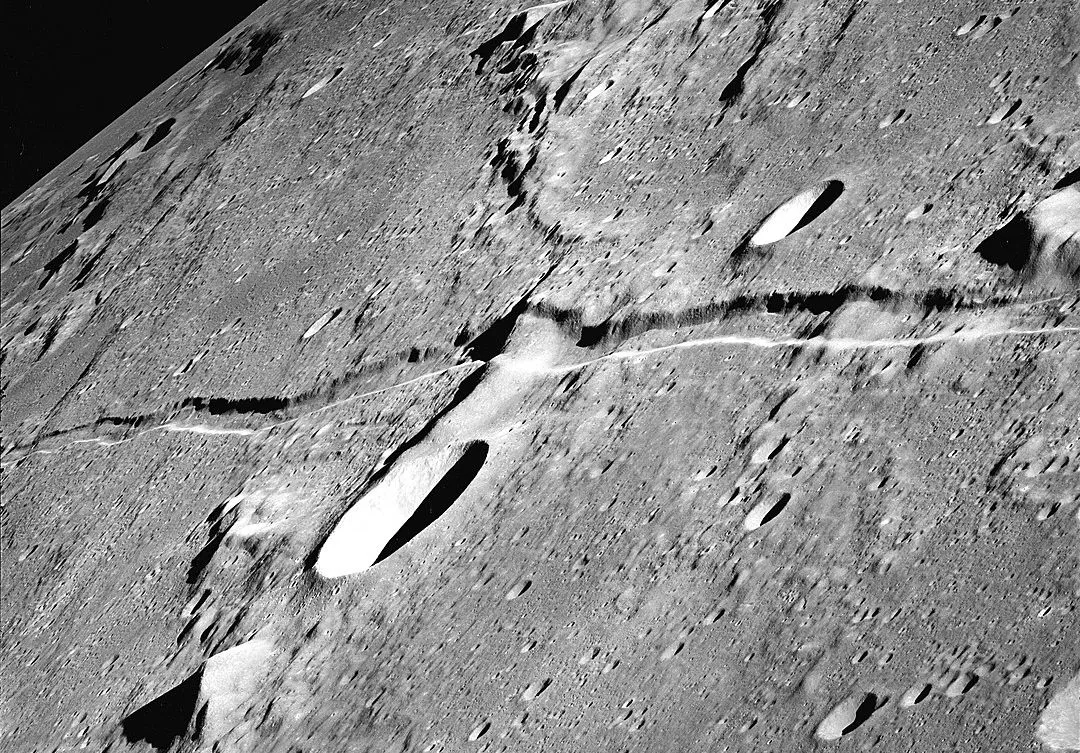
Length: 300km
Max width: 5km
Best time to see: Six days after new Moon or five days after full Moon
Min scope size: 4 inches
Rima Ariadaeus is a straight rille that crosses 300km of the lunar surface between the Mare Tranquillitatis and the Mare Vaporum, with sides that are more or less parallel for its entire length.
The rille starts close to the edge of the western shore of the Mare Tranquillitatis, which is in the bottom right of the image above, just north of a small pair of craters, 12km-wide Ariadaeus and 8km-wide Ariadaeus A.
It heads off from there in a westerly direction with a slight tilt to the north, passing to the south of battered 94km-wide crater Julius Caesar before reaching a couple of small peaks.
It appears to shift sideways before resuming its path in the same direction.
The sideways shift – and there’s another close to the western end of the rille – is a rare example of a strike-slip fault, where the crust shows horizontal, lateral movement.
As it approaches the Mare Vaporum, Rima Ariadaeus appears to become more shallow.
A tributary can be seen splitting off towards Rima Hyginus here.
Rima Petavius
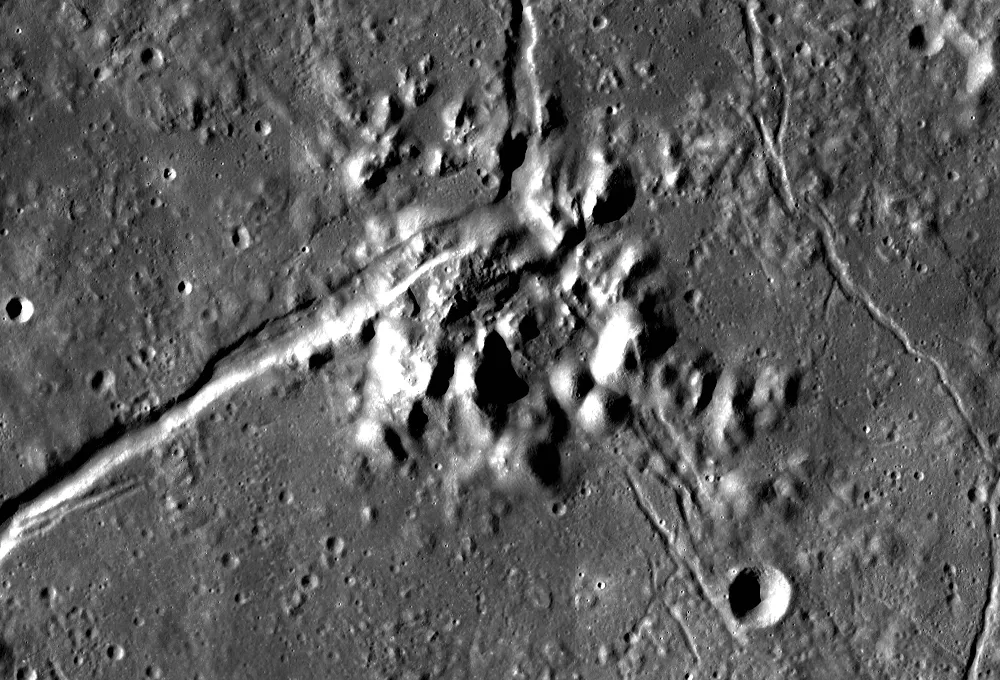
Length: 60km
Max width: 2km (main southwestern feature)
Best time to see: Three days after new Moon or two days after full Moon
Min scope size: 3 inches Petavius is a 182km-wide crater close to the Moon’s southeast limb.
Its location means that this circular feature appears foreshortened into an ellipse from Earth.
Located right at the heart of the crater is a huge mountain complex.
Running from the southwestern rim towards this complex is Rima Petavius, a straight rille that resembles the minute hand on a giant clock face.
As crater rilles go, this is one of the larger ones, and it’s visible in a small scope under the right conditions.
Although the ‘minute hand’ appears to be fairly straight, the rille doesn’t have the flat floor characteristic of a graben; its cross section is more V-shaped.
A second rille seems to emanate from the mountain complex extending to the northern rim, but high-resolution images show that it is a continuation of the larger rille.
There are also a number of smaller rilles to the northeast of the central mountains.
A further curiosity is the unusual parallel grooved feature that curves to the south where the main rille meets the crater’s rim.
Vallis Schröteri
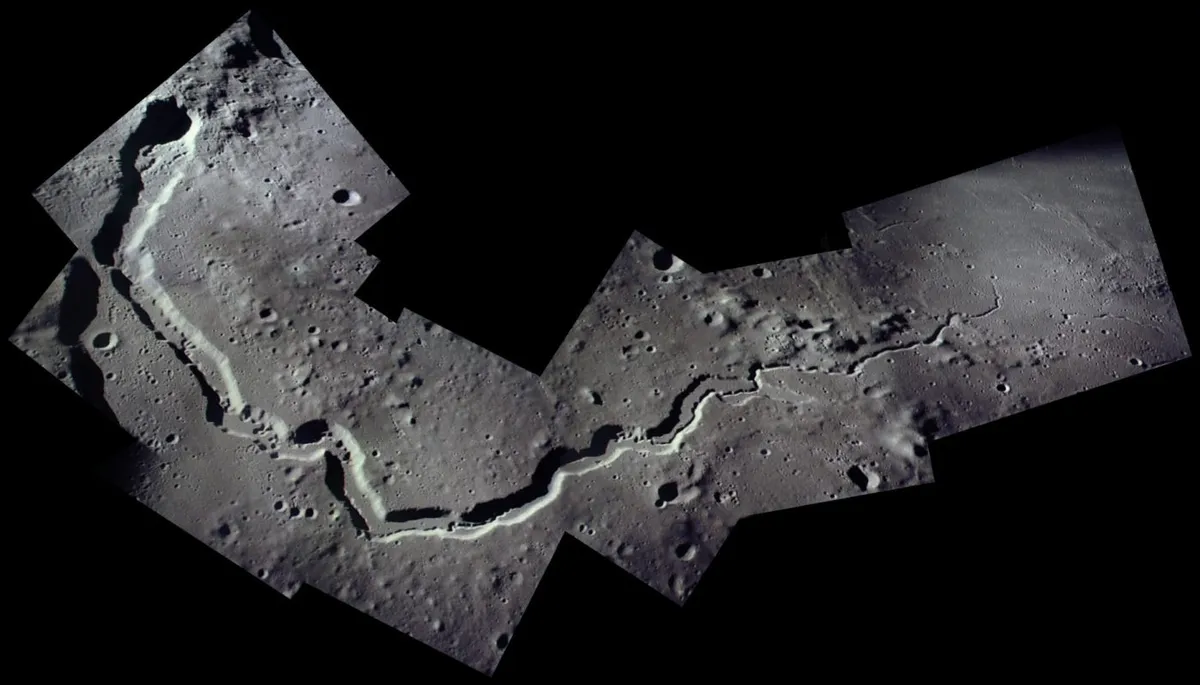
Length: 140km
Max width: 10km
Best time to see: Four days after first quarter or three days after last quarter
Min scope size: 4 inches
Vallis Schröteri is an impressive snake-like feature near to 41km-wide crater Aristarchus, the brightest crater on the near side of the Moon.
From Earth we see this sinuous rille meandering away from an adjacent crater, 36km-wide Hetrodotus.
The valley heads north from Herodotus for about 30km before veering off to the northwest for a further 50km.
At the end of this section it twists and turns before resuming its track, this time in a southwesterly direction.
The width of the valley varies along its track, the main part ranging between 6km and 10km, but decreasing to just 500m as it terminates in the west.
Near crater Herodotus is a wider feature informally known as the ‘Cobra’s Head’.
It formed through the merger of the rille with a craterlet, and the rille itself extends for a short distance beyond it.
There’s another extremely thin rille within the Cobra’s Head, a hard-to-spot feature that is estimated to be just 200m wide.
Rimae Hippalus
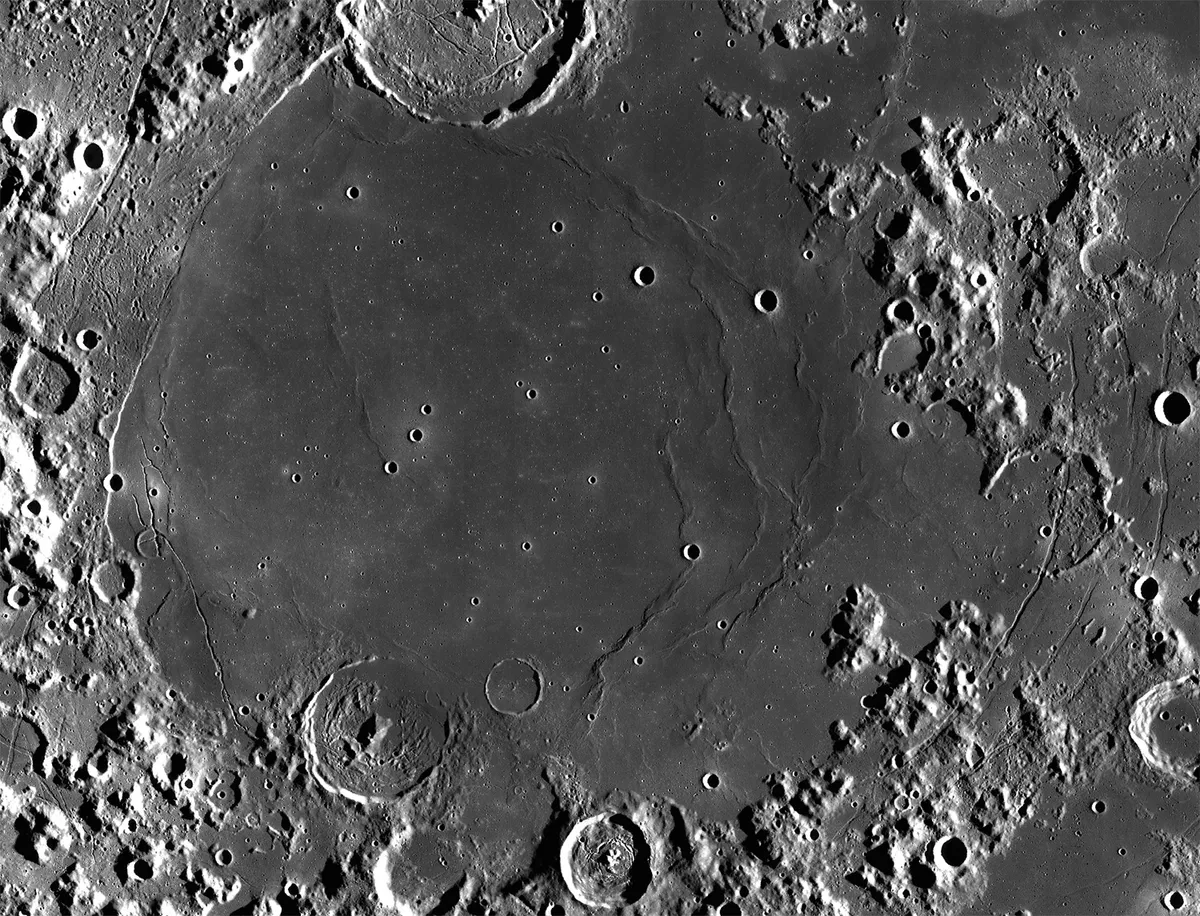
Length: 230km (longest rille)
Max width: 3km
Best time to see: Three days after first quarter or two days after last quarter
Min scope size: 4 inches
The eastern edge of the Mare Humorum shows a number of concentric cracks known as the Rimae Hippalus.
These arcuate rilles formed when the lava that filled the Humorum Basin cooled and shrank; the sheer weight of material at the centre of the basin caused the cracks to appear at the edge.
The rilles get their name from the 60km-wide crater Hippalus, one side of which is submerged by the Humorum lava.
The three main rilles – Hippalus I, II and III – are accompanied by several shallower and less obvious cracks.
The main rilles head through the Rupes Kelvin, a mountainous region on the southeast shores of the Mare Humorum.
The mountains’ influence on the rilles is clear; although the inner rille holds its own as it passes through, the outer two converge.
Rima Hyginus
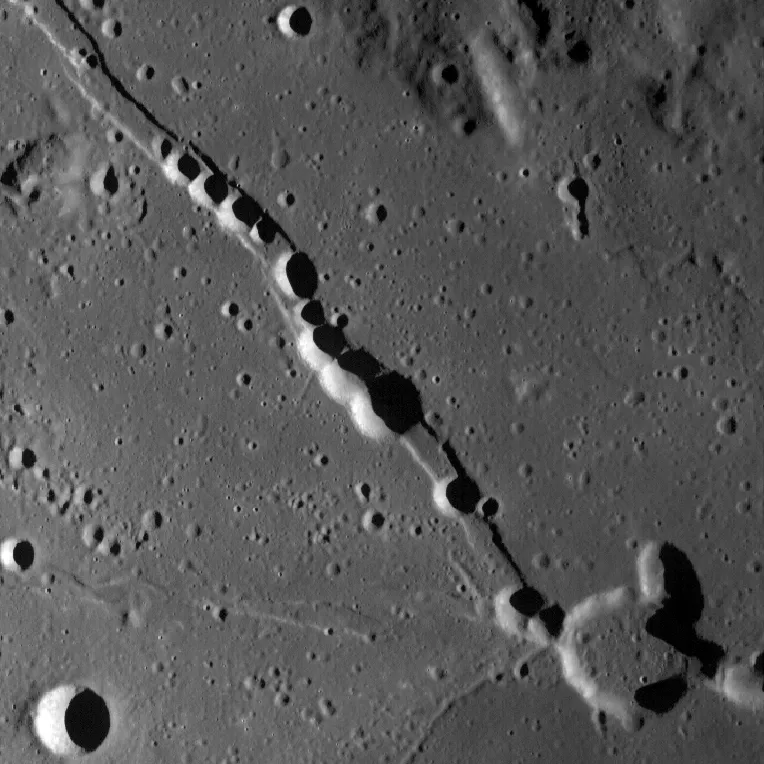
Length: 220km
Max width: 2km
Best time to see: Six days after new Moon or five days after full Moon
Min scope size: 6 inches
The partly straight and partly sinuous Rima Hyginus is a fascinating feature close to Rima Ariadaeus.
It starts just south of Ariadaeus, where it is quite shallow. From there it runs west-northwest to the 10km-wide crater Hyginus, where it bends further to the north, following a mostly straight path.
High-magnification views through larger instruments show that this northern track is littered with small craterlets.
One plausible explanation for this is that the ceilings of some underground lava tubes have collapsed, creating pits that are visible from the surface.
The same thing has been seen in underground lava tubes on Earth.
It’s very likely that the origin of crater Hyginus is volcanic rather than impact.
If so, it is one of the largest non-impact craters on the Moon’s surface.
Vallis Alpes
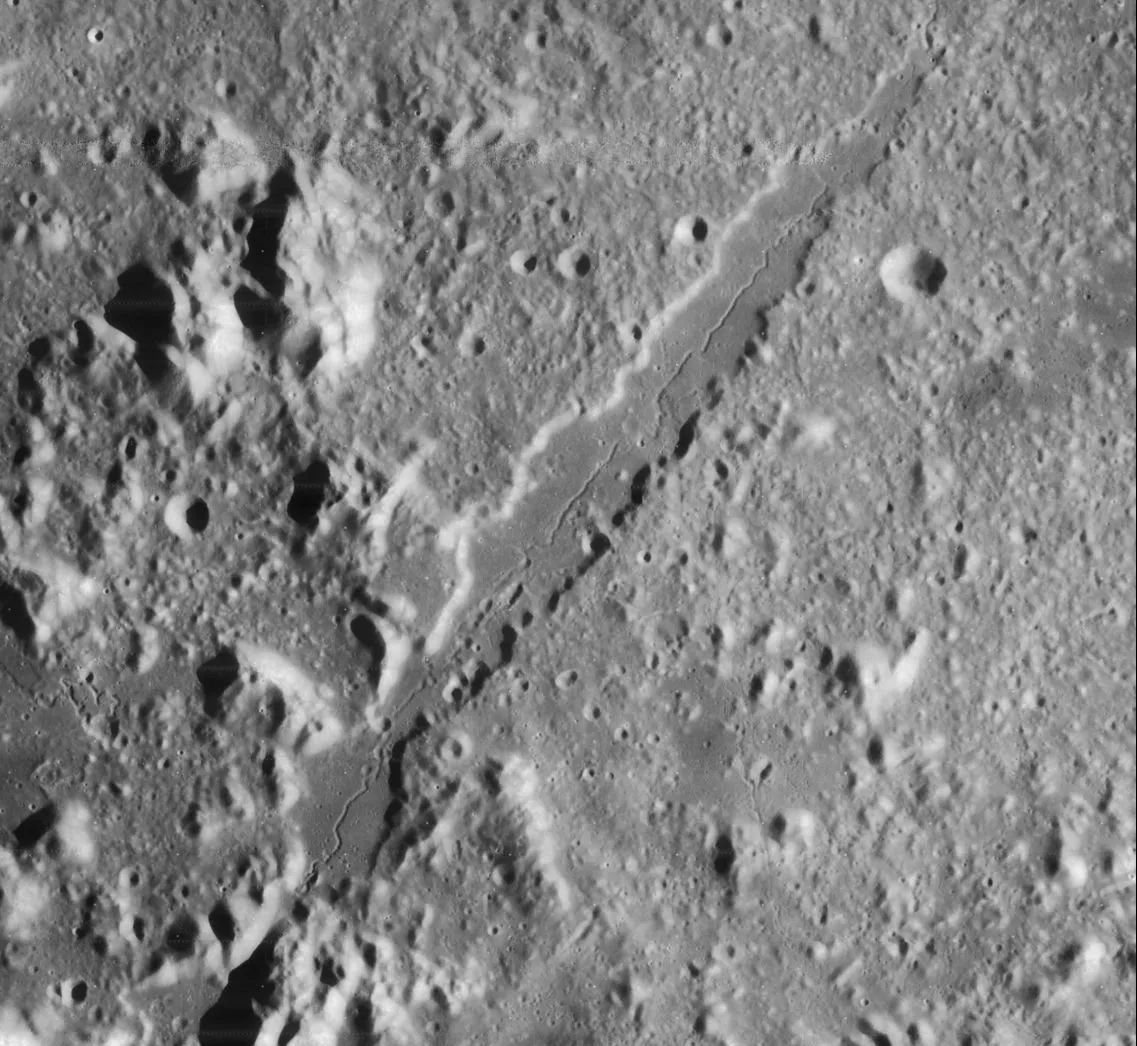
Length: 180km
Max width: 12km
Best time to see: first quarter or six days after full Moon
Min scope size: 2 inches
The famous Vallis Alpes is near to the northeast shore of the huge Imbrium Basin.
This straight rille is an example of a graben, where the lunar surface between two fault lines has fallen downwards.
The valley runs in a straight line, southwest to northeast.
At its southern extreme, the valley is pinched shut by two mountains, sometimes referred to as the ‘Guardians’.
These actually do cut the valley off, so it doesn’t quite make it to the Mare Imbrium.
Just to the north of the Guardians, the walls of the valley open out into an oval amphitheatre.
After this they come together again before continuing along the straight main run.
The southern wall runs fairly straight for most of the valley’s length, but the northern one shows greater irregularity.
Under certain lightning conditions it appears that there is a disturbance running at right angles that crosses the middle section of the valley.
At 180km long and 12km across at its widest point, this is a major feature on the lunar landscape that is easy to see even with small instruments.
The walls of the valley cast shadows onto the flat floor below – whether it’s the northern or southern wall that does this depends on the Moon’s phase.
Examining the feature close up at high resolution reveals another sinuous rille running right down the main valley’s centre.
This is approximately 100m deep and generally less than 1km across.
For dedicated lunar observers, spotting or imaging this little rille is seen as a significant achievement.
Rima Hadley
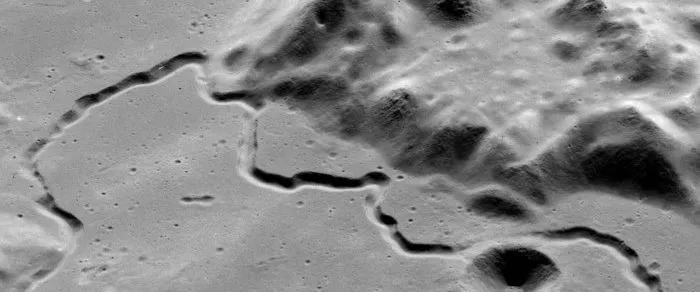
Length: 80km
Max width: 2km
Best time to see: First quarter or six days after full Moon
Min scope size: 8 inches
Rima Hadley is best known because Apollo 15 landed just to the north of it, giving us exciting close-up views of the feature taken from the lunar surface.
It requires a bit of perseverance to see from Earth, but it’s certainly worth the effort.
You can resolve the rille in an 8-inch scope, though its narrow width of just 2km means that the seeing needs to be stable.
Rima Hadley takes its name from the nearby Apennine mountain known as Mons Hadley, which is 4,400m high.
The rille resembles a sinuous, meandering river as it crosses a flat, lava-filled region within the Apennine Mountains: an extension of the unpleasant sounding Palus Putredinus, the Marsh of Decay.
You can locate this region by drawing the shortest line possible between the southeastern rim of 85km-wide crater Archimedes and the mountains.
The key to locating Rima Hadley is to find 6km-wide crater Hadley C.
Once you find this crater, you’ll be looking at the right part of the Moon – the rille snakes off to either side of it.
It’s the beautifully smooth curves of this 300m-deep collapsed lava tube that makes it such a thrill to locate.
A straighter section to the north marks the approximate location of the Apollo 15 lunar module.
The rille continues on to a mountainous outcrop, passing around its base before coming to an end.
Rimae Gassendi
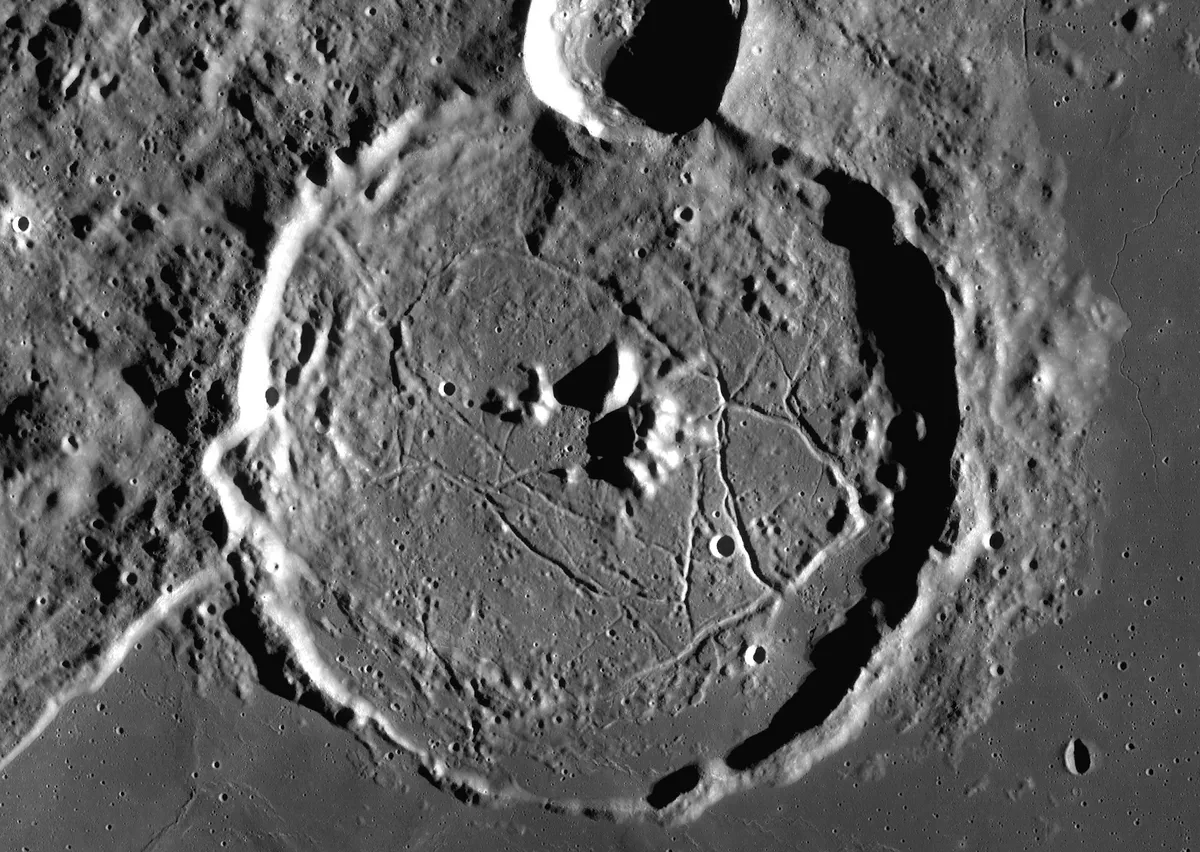
Length: 80km (longest)
Max width: Less than 2km
Best time to see: Three days after first quarter or two days after last quarter
Min scope size: 8 inches
The 114km-wide crater Gassendi sits on the northern shore of the Mare Humorum.
It’s a large circular crater with a central mountain complex of multiple peaks that tower to heights of 1,200m.
It appears as an oval from Earth due to foreshortening.
Gassendi’s flat floor is covered in arcuate cracks, which are collectively known as the Rimae Gassendi.
The cracks are fine and intersect in many places, forming a network that stretches right across Gassendi.
The crater’s rim looks as if it has been breached by lava from the Mare Humorum to the south, flooding a crescent section of the crater floor.
High-resolution shots from spacecraft show that the rim is actually intact, and that the lava that flowed into crater probably entered it beneath the rim.
The contrast between the flat crescent section and the heavily cracked majority of Gassendi’s floor is certainly noticeable.
The rilles are quite small, so you’ll need at least an 8-inch scope and good seeing to stand a
chance of spotting them.
The exact mechanism for their formation isn’t fully understood, but is most likely to be connected to a general cracking that occurred when the molten lava floor cooled.
A younger, 6km-wide crater known as Gassendi A interrupts the main crater rim to the north.

